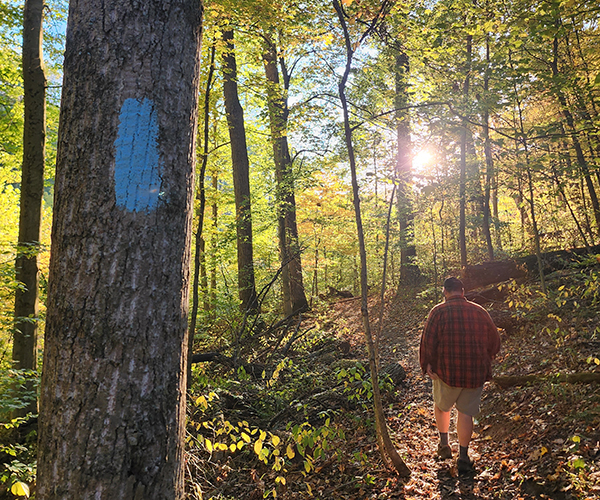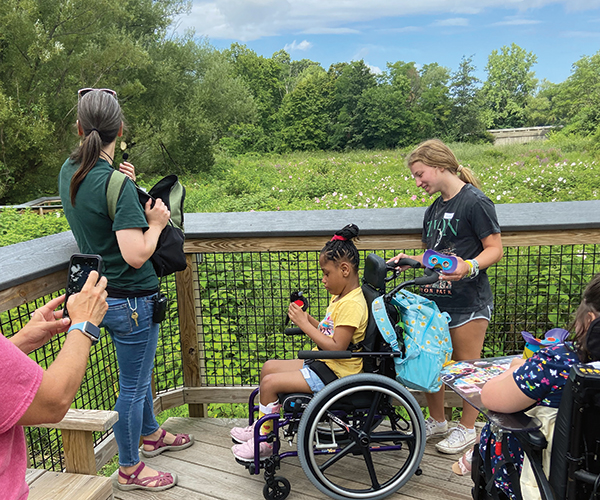A cold winter wind sweeps across the field where Confederate Gen. George Pickett’s men made a fatal charge, losing the Civil War battle of Gettysburg on its final day, July 3, 1863. The wind and the barren winter landscape seem oddly appropriate and timely for a moment’s reflection on the event, despite the fact that the northern and southern armies fought the bloodiest battle in American history in the sweltering heat.
Change, President Obama promises, is coming, and what better place to stand and feel the rush than at Gettysburg? It is here where Obama’s touchstone, Abraham Lincoln, also spoke of renewal during a brief visit in 1863 to dedicate the Soldier’s National Cemetery. One can look back to see a time — like the present — with a divided country hoping for reconstruction.
So if your ideal vacation, like mine, involves diving into history rather than the hotel pool, exploring the past in Gettysburg for a glimpse of the future of our country and our new president can be just as renewing as a trip to the spa.
The moving film shown at the new Gettysburg National Military Park Visitors Center Museum is a good place to start. Narrated by Morgan Freeman, the 22-minute documentary explains how the debate over slavery exploded into the bloody conflict.
Plus, a spectacular cyclorama is housed just above the theater, capturing stunning images of the injury, death and destruction of Pickett’s charge. Painted over the course of a year from 1883 to 1884 by Paul Philippoteaux, the recently restored cyclorama stands 42 feet high with a circumference of 377 feet. Sound and lighting effects and a new diorama leading to the edge of the painting combine to lend the scene a startling three-dimensional effect.
Surrounding the theater and the cyclorama are museum galleries, which bring the war to life in vivid detail. There are recreations of an officer’s tented battlefield campsite and of Confederate Gen. Robert E. Lee’s field headquarters. But one of the most striking artifacts, and one which can illustrate the soldiers’ mentality better than any painting there, is a letter from Union Sgt. Paul Vaughn of Connecticut. He begins, “If I could only go off somewhere and have a good cry ... .”
Once you’re on the battlefield, the museum’s images become reality. For instance, you can actually see the part that terrain played in this conflict. Dips in the fields protected troops, while a hilltop vantage point let Union armies reign devastation on charging Confederate soldiers. Book a battlefield guide at the visitor center. It justifies the group fee of $55 as the guides, who take rigorous written and oral exams to become licensed, are highly informed and enthusiastic narrators.
Though history focuses on the battlefield, I was also curious to learn how the three-day conflict gripped the town of Gettysburg. For this perspective, go to the Shriver House Museum. The home of George Washington Shriver has been meticulously restored, and it stands as a testament to the violence the townspeople experienced. Renovators found unexploded bullets in the attic, which Confederate soldiers had occupied, and a recent application of blood reagent revealed chilling blood stains smeared across the walls and floor.
If that doesn’t send you running, you may want to check into the Cashtown Inn, about seven miles from Gettysburg. It was once Confederate headquarters, and now welcomes visitors with good food, cozy bedrooms and the chance to spot a ghost or two. But if you’d just as soon brave the cold than long-dead soldiers, turn in at the Hotel Gettysburg at Lincoln Square. Many of the warmly refurbished rooms afford beautiful views looking out over the village of red brick homes and steeples to the distant hills beyond.
Before you leave, take a minute to reflect on the continuing power of Lincoln’s address at Cemetery Hill. The entire speech is inscribed there on a memorial. Even here, the hope of what Lincoln termed “a new birth of freedom” is in the wind.
Change, President Obama promises, is coming, and what better place to stand and feel the rush than at Gettysburg? It is here where Obama’s touchstone, Abraham Lincoln, also spoke of renewal during a brief visit in 1863 to dedicate the Soldier’s National Cemetery. One can look back to see a time — like the present — with a divided country hoping for reconstruction.
So if your ideal vacation, like mine, involves diving into history rather than the hotel pool, exploring the past in Gettysburg for a glimpse of the future of our country and our new president can be just as renewing as a trip to the spa.
The moving film shown at the new Gettysburg National Military Park Visitors Center Museum is a good place to start. Narrated by Morgan Freeman, the 22-minute documentary explains how the debate over slavery exploded into the bloody conflict.
Plus, a spectacular cyclorama is housed just above the theater, capturing stunning images of the injury, death and destruction of Pickett’s charge. Painted over the course of a year from 1883 to 1884 by Paul Philippoteaux, the recently restored cyclorama stands 42 feet high with a circumference of 377 feet. Sound and lighting effects and a new diorama leading to the edge of the painting combine to lend the scene a startling three-dimensional effect.
Surrounding the theater and the cyclorama are museum galleries, which bring the war to life in vivid detail. There are recreations of an officer’s tented battlefield campsite and of Confederate Gen. Robert E. Lee’s field headquarters. But one of the most striking artifacts, and one which can illustrate the soldiers’ mentality better than any painting there, is a letter from Union Sgt. Paul Vaughn of Connecticut. He begins, “If I could only go off somewhere and have a good cry ... .”
Once you’re on the battlefield, the museum’s images become reality. For instance, you can actually see the part that terrain played in this conflict. Dips in the fields protected troops, while a hilltop vantage point let Union armies reign devastation on charging Confederate soldiers. Book a battlefield guide at the visitor center. It justifies the group fee of $55 as the guides, who take rigorous written and oral exams to become licensed, are highly informed and enthusiastic narrators.
Though history focuses on the battlefield, I was also curious to learn how the three-day conflict gripped the town of Gettysburg. For this perspective, go to the Shriver House Museum. The home of George Washington Shriver has been meticulously restored, and it stands as a testament to the violence the townspeople experienced. Renovators found unexploded bullets in the attic, which Confederate soldiers had occupied, and a recent application of blood reagent revealed chilling blood stains smeared across the walls and floor.
If that doesn’t send you running, you may want to check into the Cashtown Inn, about seven miles from Gettysburg. It was once Confederate headquarters, and now welcomes visitors with good food, cozy bedrooms and the chance to spot a ghost or two. But if you’d just as soon brave the cold than long-dead soldiers, turn in at the Hotel Gettysburg at Lincoln Square. Many of the warmly refurbished rooms afford beautiful views looking out over the village of red brick homes and steeples to the distant hills beyond.
Before you leave, take a minute to reflect on the continuing power of Lincoln’s address at Cemetery Hill. The entire speech is inscribed there on a memorial. Even here, the hope of what Lincoln termed “a new birth of freedom” is in the wind.
If you go: Gettysburg National Military Park Museum and Visitors Center, 1195 Baltimore Pike; nps.gov/gett; Shriver House Museum, 309 Baltimore St.; shriverhouse.org; Cashtown Inn, 1325 Old Route 30, Cashtown, Pa.; cashtowninn.com; Hotel Gettysburg, One Lincoln Square; hotelgettysburg.com
Pit Stops
Somerset Historical Center is a great place to see how 19th century farmers smoked meat, tapped maple syrup and transported goods during Pennsylvania’s frontier days. 10649 Somerset Pike, Somerset, Pa.; somersethistoricalcenter.org
Old Bedford Village is a snapshot of the heartland at the time of the Civil War with a look at log cabin homes, a tiny doctor’s house and the Pendergass Tavern, which serves lunch. 220 Sawblade Road, Bedford, Pa.; oldbedfordvillage.com
The National Civil War Museum claims to be the only museum to present full, unbiased coverage of both the Union and Confederate causes. One Lincoln Circle, Harrisburg, Pa.; nationalcivilwarmuseum.org. The battlefield at Gettysburg was a stage for change in our nation’s turbulent past.Learn more about Gettysburg at the historic Majestic Theater



